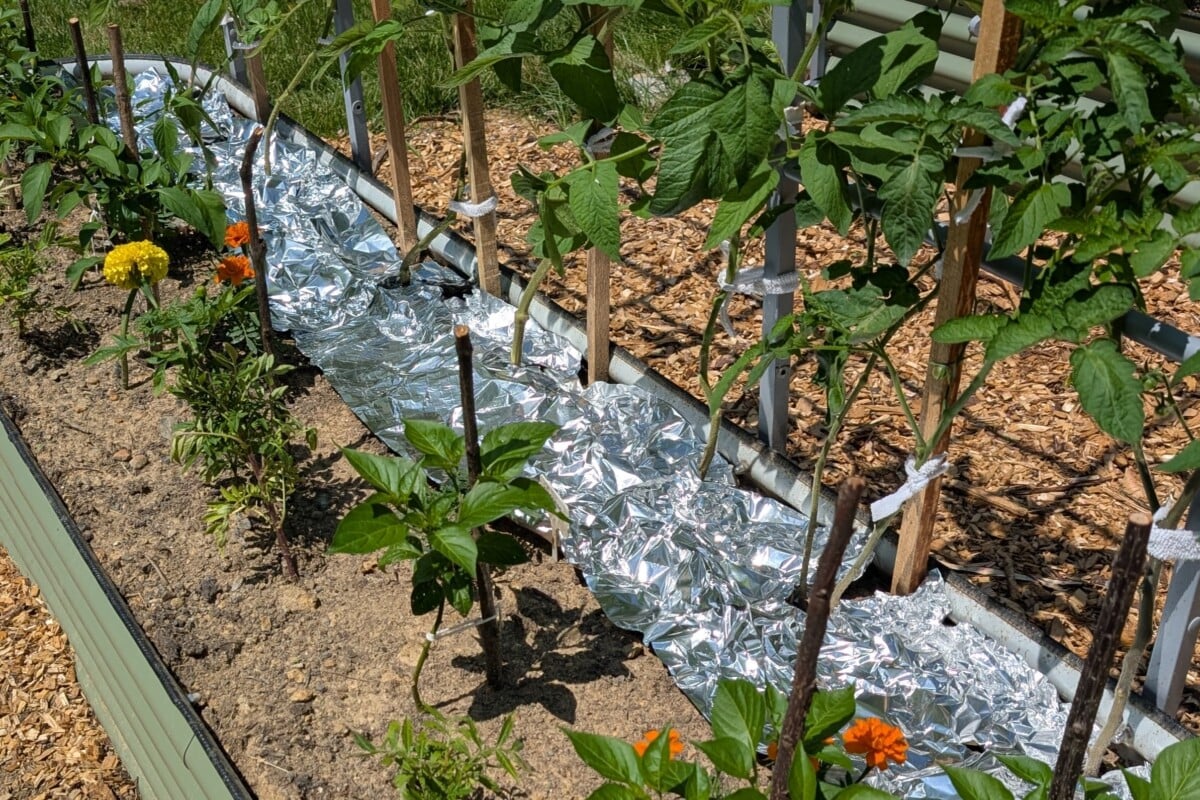
Isn’t it funny how, as gardeners, our favorite thing to grow is often the most problematic? I probably don’t even need to say it to know we’re all thinking about tomatoes. If it isn’t some weird soil disease or a chomping pest, it’s fruit that seems to hang around all summer without actually ripening.
But there are a few things you can do to encourage Mother Nature to move things along.
Because let’s face it, some gardeners are impatient. It’s me. Hi, I’m the gardener. It’s me. I’m impatient. Seriously, I need big fat heirlooms to slice and cover in salt, pepper and dill. Snap to it; let’s go, tomatoes!
Give Your Tomatoes a Strategic Prune
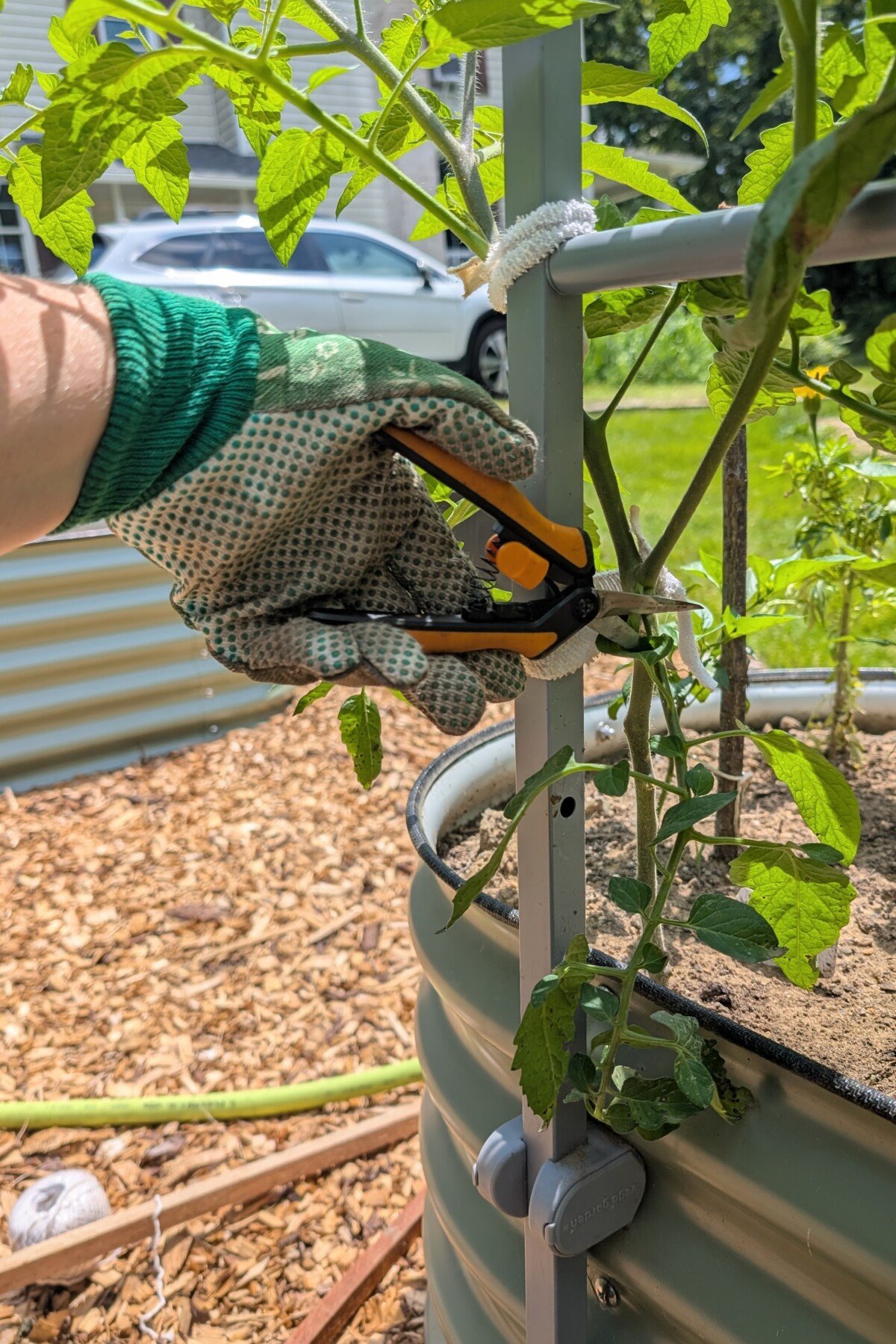
Midseason tomatoes can be a bit like living with someone who has a habit of starting lots of projects and moving on to the next new project before they finish it. If you take some of those projects away, they will focus on finishing up what they’ve already started.
Ahem, again, it’s me. Hi, I’m that person. In the case of your garden, strategic pruning redirects the plant’s energy into ripening what it’s already produced rather than starting lots of new projects (more leaves and branches).
Snip out unnecessary suckers. You know, the little shoots that sprout between the main stem and a branch. Also, remove some of the lower leaves that are no longer serving a purpose.
Be careful not to strip the plant bare, though. Tomatoes still need leaves to shade and cool ripening fruit and prevent sunscald. But redirecting their energy into fruit and away from world domination will get you ripe tomatoes faster.
I always remove the bottom third of the leaves on my tomato plant. It goes a long way in making them more disease resistant. You can read about why and how to do it here. (And you should, too.)
Use the Right Fertilizer
I know I say this in nearly every article I write about tomatoes, but it’s so important. Using the right fertilizer at the right time of year plays a huge role in when your tomatoes will start producing fruit and ripening said fruit.
In the early part of the growing season, we focus on the overall growth of the plant with a nitrogen-rich fertilizer. This gives us a solid foundation with a thick and sturdy main stem and plenty of leafy growth to support the fruit that will follow.
Then, as the season progresses and the plant starts to produce flowers, we switch to a fertilizer that supports blooms and fruit. That means lower nitrogen and higher potassium and phosphorus. These are key nutrients that are important not only for the development of flowers and fruit, but also for plant ripening.
My go-to standard fertilizer for this time of year is Garden-tone by Espoma. It’s great for all over the garden.
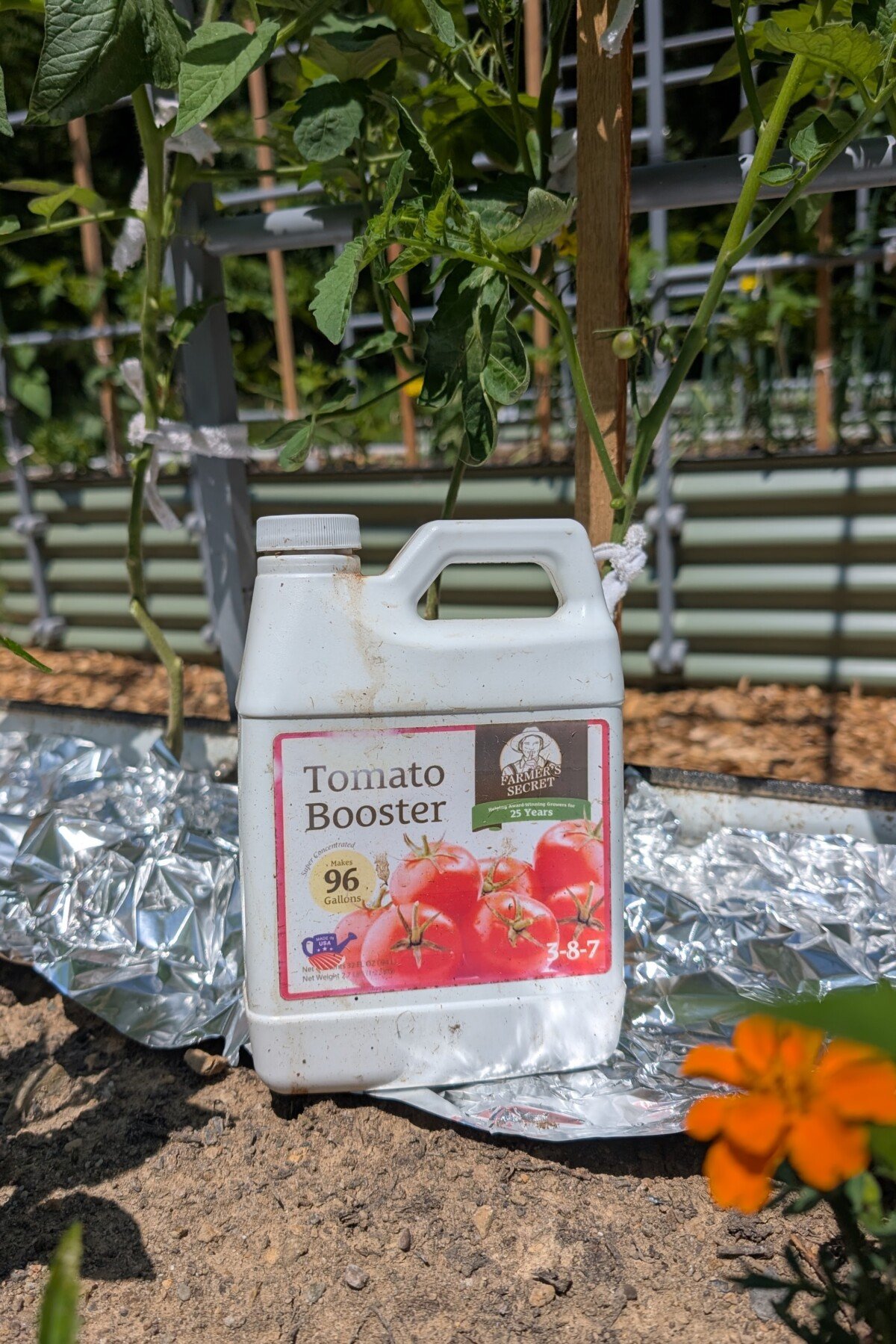
But! I stumbled across this stuff in one of my favorite local hardware stores two years ago, and I use it exclusively on all of my nightshades – tomatoes, peppers, and eggplants – from July on.
I’ve tried many fertilizers over the years, and none that worked as well as this one. I follow the directions on the bottle and use it every two weeks.
Back Off on Watering
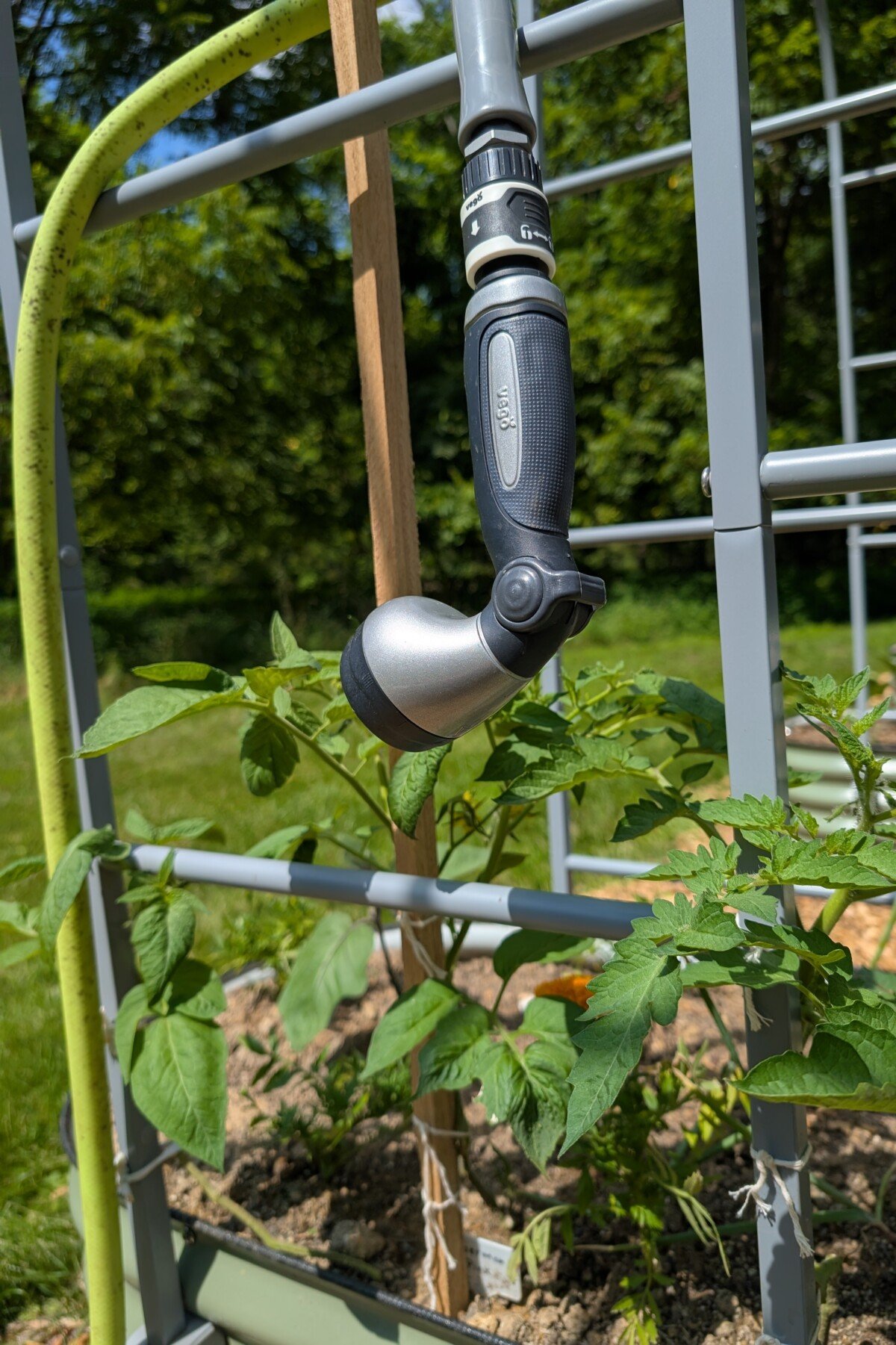
I know it sounds counterintuitive, but if you have stuck tomatoes and want to get them ripening, stress will do the trick. Now, to be clear, we’re not talking drought-like conditions. You want to ease up on the watering schedule by a day or two.
Less water tells the plant, “Hey, conditions are changing. Might be time to get this fruit ready.”
This is a balancing act. Too much water stress can cause the plant to abort blossoms and sometimes fruit. Again, we’re not talking drought-like conditions. You should only be watering deeply and infrequently to begin with. But now we’re going to give it another day or two before watering.
If the plant is actually showing signs of stress or your area is experiencing extreme heat or drought, skip this trick. This is one to keep in your back pocket if conditions otherwise are pretty decent. We’re introducing a bit of stress, not adding to already stressful growing conditions.
Put Aluminum Foil Under Your Plants
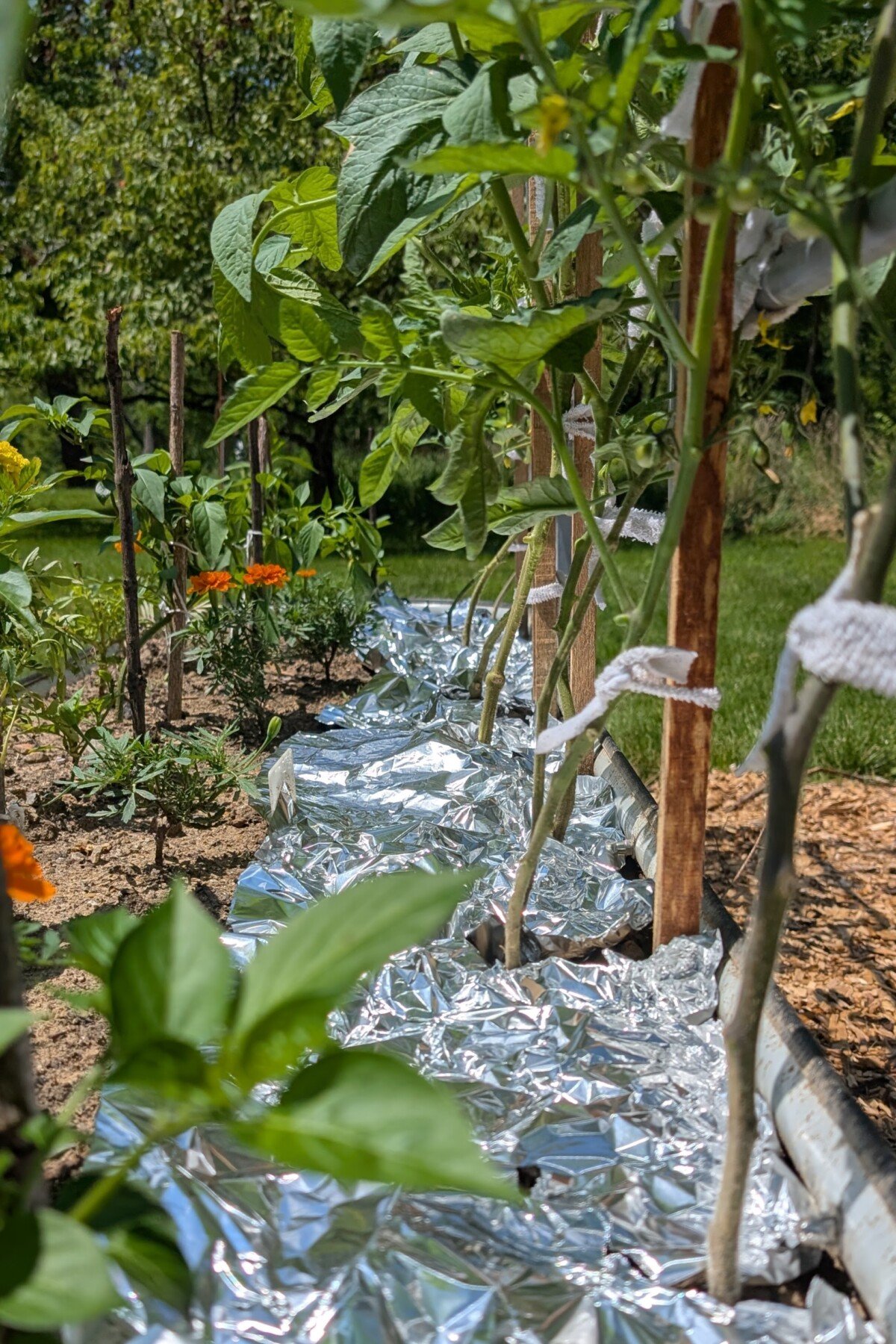
Laying reflective aluminum foil around the base of your plants can bounce light back up under the canopy. This extra light exposure can help accelerate ripening by stimulating ethylene production and increasing the surrounding warmth. This is a great trick to deploy early in the growing season.
You can remove the foil once tomatoes start ripening or if temperatures begin to soar.
Bonus: Reflective mulch also helps deter aphids and whiteflies, since they hate the disorienting glare. So, you’re ripening faster and keeping the pests dizzy. Win-win.
But be warned—this trick only works when it’s not already blazing hot. More on that in a minute.
Trap Ethylene Gas
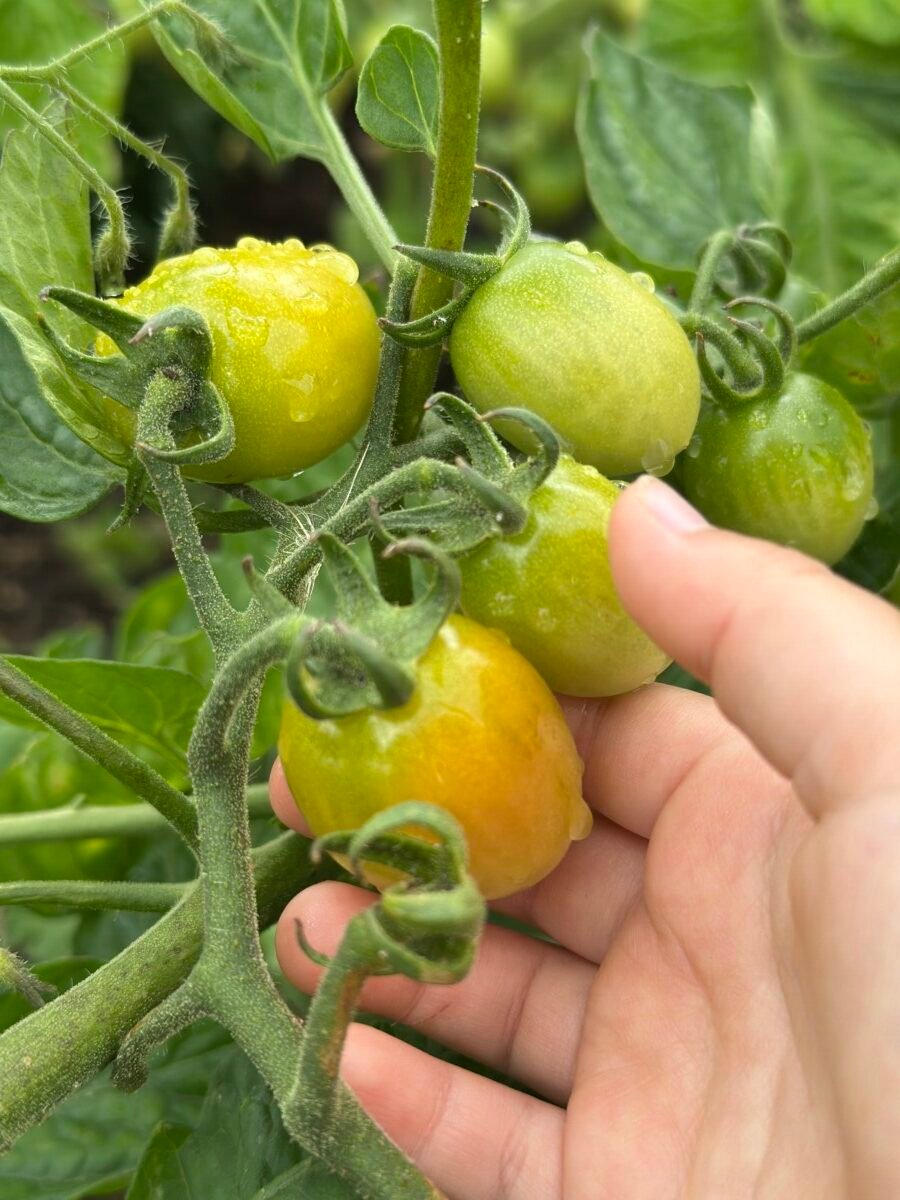
Ethylene gas is the magic natural ripening hormone. Tomatoes begin producing it from within, which is why tomatoes color up from the center out as they ripen. Generally, once a couple of tomatoes on a cluster begin to ripen, the others quickly follow suit. That’s because the nearby fruit is benefitting from the production of ethylene from the ones already ripening.
If you grow your tomatoes in hothouses or tunnels, you’ve got a leg up on the rest of us because you’re effectively trapping that ethylene around the developing fruit.
However, if you want to kick off this progression without tunnels, there are a few ways you can do it.
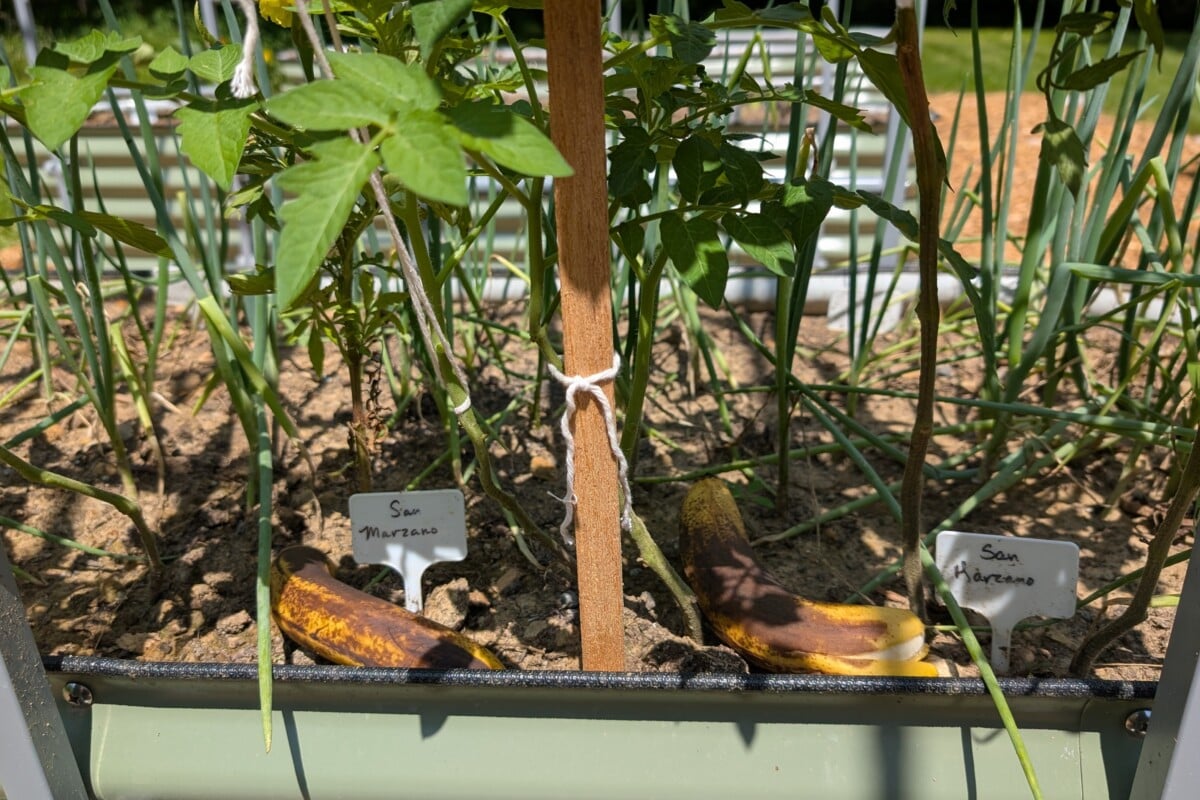
Apples and bananas are both big producers of ethylene. There is some anecdotal evidence to support putting these fruits at the base of your tomato plants. Just like when you put them near other fruit or veggies on your kitchen counter, nearby fruit tends to ripen quicker.
(Psst. Did you pick or buy peaches that are a little underripe? Using an apple is a great way to ripen them up quickly.)
If you’ve got an apple tree on your property, you can place windfall apples beneath your tomato plants to produce ethylene. Leave them to slowly break down, adding nutrients and organic matter to your soil each year.
Likewise, and this one is a little weird, you can tie plastic grocery bags around clusters of tomatoes once they start showing signs of ripening. This will speed up the process. However, you have to be careful; you can easily cook them if too much heat builds up in the bag. Cut a few slits in it for ventilation. Yes, you’ll lose some ethylene, but not all of it.
Only keep the bags on for one or two days, then remove them. We’re kick-starting the ripening process, not doing all the ripening under cover.
When It’s Hot as H-E-Double-Hockey Sticks
All of the above tips are great for jump-starting the ripening process in tomatoes, unless it’s blazing hot outside. When the temperature climbs into the 90s (F), it can really put a damper on tomatoes. Extreme heat doesn’t just slow tomato ripening; it can actually shut down ethylene production altogether.
When daytime highs are consistently above 85–90°F and nighttime temps don’t drop below 70°F, tomato plants freak out.
They stop ripening, may drop blossoms, and essentially dig in their heels until the weather cools off. If you’ve ever wondered why your garden hits a lull during a heatwave, now you know.
At this point, all bets are off, and you need to do what you can to minimize heat stress.
Your plants are conserving energy to stay alive. Ripening is not one of those things.
Here’s what to do when your tomatoes are sweating it out:
- Ditch the reflective mulch. In normal temps, it’s a helpful boost. In extreme heat, it’s like putting your tomatoes in a tanning bed when they already have heatstroke. Pull it away and let the soil breathe.
- Provide some shade. A 30–50% shade cloth hung above your tomato patch can make a huge difference. Oftentimes, it is the difference between eating ripe tomatoes in July and August or existing on fried green tomatoes and green tomato relish. (Both delicious, by the way. And great recipes to save for the end of the season.)
- It lowers the leaf and fruit temperature enough to keep ethylene production chugging along. Learn how to use shade cloth appropriately, here.
- Water deeply and early in the day. This helps reduce plant stress and keeps things cooler overall. Try to avoid splashing the leaves, and never water in the heat of the day.
- Avoid major pruning or fertilizing. During a heatwave, your plants are already stressed. Don’t throw more change at them. Wait until temps settle before trimming or feeding. Fertilizing during a heatwave is one of the most common fertilizing mistakes.
- And finally, don’t panic. If your tomatoes have slowed down, they’ll perk back up once the weather cools off. Keep them happy and healthy in the meantime, and they’ll be ready to ripen the moment conditions are right. I’ve got more information on growing tomatoes in a heatwave and how it affects ripening here.
Growing tomatoes teaches us patience, whether we want to learn it or not. In theory anyway, I’m still impatient. But a few smart tweaks, and a little attention to the weather, can help nudge those stubborn fruits from green to red a little faster, right when you want them most. At lunchtime.
The post Handy Tricks to Ripen Tomatoes Faster This Summer appeared first on Rural Sprout.
